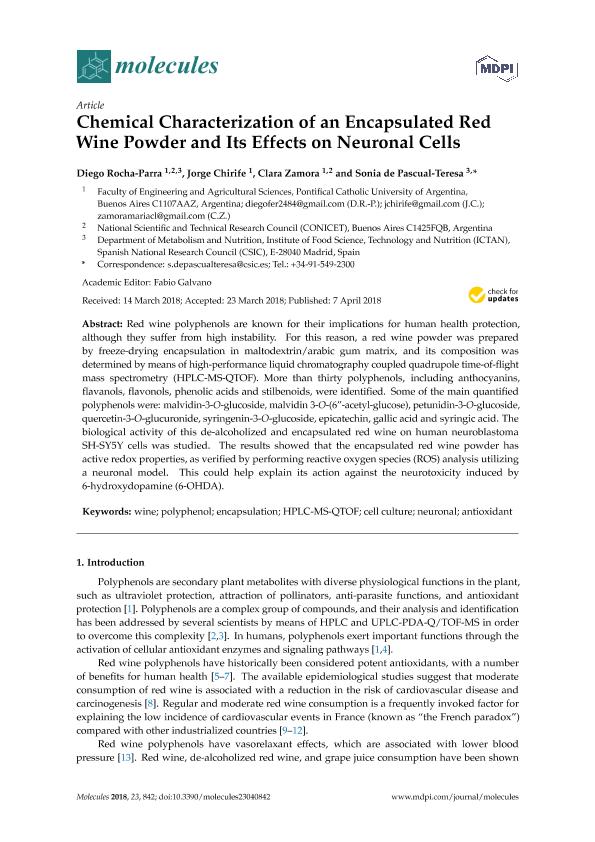Artículo
Chemical characterization of an encapsulated red wine powder and its effects on neuronal cells
Fecha de publicación:
04/2018
Editorial:
Molecular Diversity Preservation International
Revista:
Molecules
ISSN:
1420-3049
Idioma:
Inglés
Tipo de recurso:
Artículo publicado
Clasificación temática:
Resumen
Red wine polyphenols are known for their implications for human health protection, although they suffer from high instability. For this reason, a red wine powder was prepared by freeze-drying encapsulation in maltodextrin/arabic gum matrix, and its composition was determined by means of high-performance liquid chromatography coupled quadrupole time-of-flight mass spectrometry (HPLC-MS-QTOF). More than thirty polyphenols, including anthocyanins, flavanols, flavonols, phenolic acids and stilbenoids, were identified. Some of the main quantified polyphenols were: malvidin-3-O-glucoside, malvidin 3-O-(6”-acetyl-glucose), petunidin-3-O-glucoside, quercetin-3-O-glucuronide, syringenin-3-O-glucoside, epicatechin, gallic acid and syringic acid. The biological activity of this de-alcoholized and encapsulated red wine on human neuroblastoma SH-SY5Y cells was studied. The results showed that the encapsulated red wine powder has active redox properties, as verified by performing reactive oxygen species (ROS) analysis utilizing a neuronal model. This could help explain its action against the neurotoxicity induced by 6-hydroxydopamine (6-OHDA).
Palabras clave:
ANTIOXIDANT
,
CELL CULTURE
,
ENCAPSULATION
,
HPLC-MS-QTOF
,
NEURONAL
,
POLYPHENOL
,
WINE
Archivos asociados
Licencia
Identificadores
Colecciones
Articulos(SEDE CENTRAL)
Articulos de SEDE CENTRAL
Articulos de SEDE CENTRAL
Citación
Rocha Parra, Diego Fernando; Chirife, Jorge; Zamora, María Clara; de Pascual Teresa, Sonia; Chemical characterization of an encapsulated red wine powder and its effects on neuronal cells; Molecular Diversity Preservation International; Molecules; 23; 4; 4-2018; 1-12
Compartir
Altmétricas




